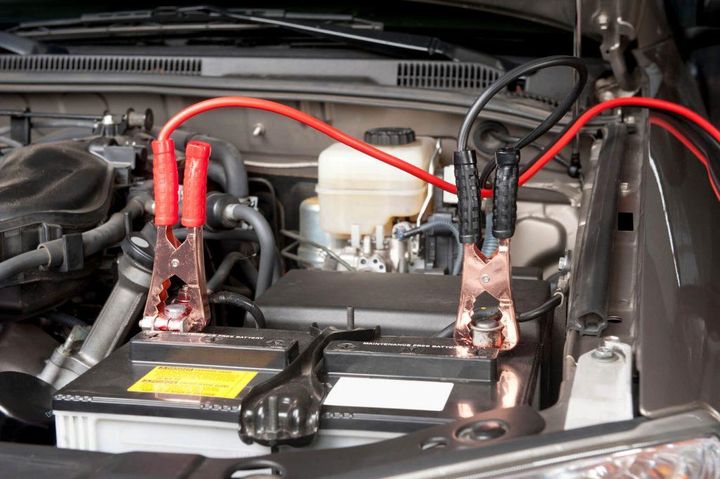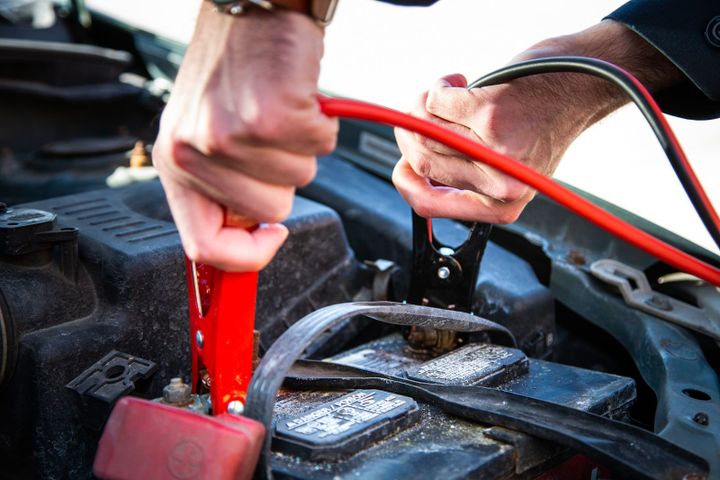


An engine misfire occurs when one or more cylinders in an internal combustion engine fail to produce power. This can result in a variety of symptoms, including hesitation, loss of power, rough idling, and increased emissions. Misfires can be caused by several factors, which can be broadly categorized into ignition system issues, fuel system problems, air system malfunctions, and mechanical failures.

Before we explore how a bad battery can contribute to misfires, let's first understand the battery's crucial role in the engine's operation. The battery is the heart of your vehicle's electrical system, providing the necessary voltage to power various components, including the ignition system, fuel system, and engine control unit (ECU).
| Component | Function |
|---|---|
| Ignition System | Generates the high-voltage spark required for combustion |
| Fuel System | Powers the fuel pump and injectors for proper fuel delivery |
| Engine Control Unit (ECU) | Manages and controls the engine's operation |
When you turn the key (or push the start button), the battery supplies the initial burst of power to crank the engine and initiate the combustion process. Once the engine is running, the alternator takes over and charges the battery while also providing power to the electrical systems.
While a bad battery itself is unlikely to directly cause misfires, it can indirectly contribute to misfiring issues in several ways:
A weak battery may not provide enough voltage to the fuel pump, causing it to run slower and deliver less fuel to the injectors. This lean fuel condition can lead to incomplete combustion and, consequently, misfires.
Low battery voltage can prevent the fuel injectors from opening properly or at the right time, resulting in an improper air-fuel mixture and incomplete combustion, which can also cause misfires.
The ignition system relies on a stable voltage supply from the battery to generate the high-voltage spark required for combustion. A weak battery may not supply enough voltage to the ignition coils, causing weak or inconsistent sparks at the spark plugs. This can lead to partial combustion or misfires, especially during acceleration or high RPMs when the ignition system is under increased load.
The engine control unit (ECU) or powertrain control module (PCM) is the brain of your vehicle's engine management system. It relies on a stable voltage supply to function correctly. A weak battery can cause the ECU to malfunction, leading to improper timing of ignition and fuel delivery, resulting in misfires.
If you suspect that a bad battery might be causing misfires in your vehicle, here are some steps you can take to diagnose and troubleshoot the issue:
Start by checking the battery voltage with a voltmeter. When the engine is off, a healthy battery should read around 12.6 volts. When the engine is running, the voltage should be between 13.5 and 14.5 volts, indicating that the alternator is charging correctly.
| Battery Voltage | Condition |
|---|---|
| 12.6V (engine off) | Healthy battery |
| 13.5-14.5V (engine running) | Alternator charging correctly |
Connect an OBD2 (On-Board Diagnostics) scanner to your vehicle's diagnostic port and read any diagnostic trouble codes related to misfires, ignition system, fuel system, or battery/charging system issues.
Common Misfire-Related Trouble Codes:
P0300 - Random/Multiple Cylinder Misfire
P0301 - Cylinder 1 Misfire
P0302 - Cylinder 2 Misfire
... (Continues for each cylinder)
A cylinder leak-down test can help identify compression issues that could be causing misfires. This test involves introducing compressed air into each cylinder and measuring the amount of leakage, which can indicate problems with components like head gaskets, piston rings, or valves.
Remove and inspect the spark plugs for signs of wear, fouling, or damage. Worn or fouled spark plugs can contribute to misfires and may need to be replaced.
| Spark Plug Condition | Possible Cause |
|---|---|
| Worn electrodes | Normal wear and tear |
| Fouled (black, dry soot) | Rich air-fuel mixture |
| Fouled (wet, oily coating) | Worn piston rings or valve guides |
| Cracked insulator | Detonation or overheating |
Use a fuel pressure gauge to check the fuel pressure and inspect the fuel injectors for clogs or leaks. Low fuel pressure or clogged injectors can cause lean misfires.
| Fuel Pressure | Possible Issue |
|---|---|
| Low | Faulty fuel pump, clogged fuel filter, or leaks |
| High | Stuck-open injector or regulator issue |
Once you've identified the root cause of the misfires, here are some common repair steps:
If the battery fails the voltage test or is over 3-5 years old, it's generally recommended to replace it with a new one. A fresh battery will ensure a stable voltage supply to all electrical components.
If the spark plugs or ignition coils are faulty, clean or replace them as necessary to restore proper ignition and combustion.
If the fuel injectors are clogged, you may need to clean or replace them to restore proper fuel delivery and air-fuel mixture.
Replace any faulty sensors, such as oxygen sensors or manifold absolute pressure (MAP) sensors, that could be causing improper air-fuel mixture calculations and contributing to misfires.
If the cylinder leak-down test revealed compression issues, you may need to repair or replace components like head gaskets, piston rings, or valves to restore proper compression and eliminate misfires.
To prevent misfires and other battery-related issues from recurring, follow these preventive maintenance tips:

Perform regular battery maintenance, such as cleaning the terminals and checking the electrolyte level (if applicable).
Replace the battery every 3-5 years, or sooner if it shows signs of weakness or failure.
Adhere to the manufacturer's recommended service intervals for:
Spark plugs
Air filters
Fuel filters
Other maintenance items that can impact engine performance and fuel efficiency
Use high-quality fuel and consider using fuel system cleaners periodically to prevent injector clogs and maintain proper fuel delivery.
Avoid low-quality or contaminated fuel, which can cause injector clogs and other issues.
Excessive idling or frequent short-trip driving can discharge the battery prematurely, leading to voltage issues and potential misfires.
Allow the engine to warm up properly and avoid excessive idling when possible.
The cost of repairs related to misfires and battery issues can vary depending on the specific issue and the make/model of your vehicle. Here are some approximate costs to consider:
| Repair | Approximate Cost (Parts and Labor) |
|---|---|
| Battery replacement | $100 - $300 |
| Spark plug replacement | $50 - $200 |
| Ignition coil replacement | $200 - $500 |
| Fuel injector cleaning or replacement | $200 - $800 |
| Compression-related repairs (head gaskets, piston rings, etc.) | $1,000 - $3,000 |
It's generally more cost-effective to address battery, ignition, and fuel system issues promptly before they lead to more expensive compression-related repairs.
In conclusion, while a bad battery itself is unlikely to directly cause misfires, it can contribute to misfiring issues by affecting various components of the engine's ignition and fuel systems. By understanding the potential causes, performing proper diagnosis and troubleshooting, and following preventive maintenance practices, you can minimize the risk of misfires and ensure your vehicle's optimal performance and longevity.
Remember, addressing battery-related issues promptly can save you from more costly repairs down the line. If you're ever unsure about the cause of misfires or any other engine-related issues, don't hesitate to seek the expertise of a qualified automotive mechanic.
The battery provides the initial burst of power to crank the engine and initiate the combustion process. It also supplies voltage to various electrical components when the engine is not running.
No, a weak battery itself cannot directly cause misfires. However, it can indirectly contribute to misfiring issues by affecting other components like the fuel and ignition systems.
A weak battery may not provide enough voltage to the fuel pump, causing it to run slower and deliver less fuel to the injectors. This lean fuel condition can lead to incomplete combustion and misfires.
Yes, a weak battery may not supply enough voltage to the ignition coils, causing weak or inconsistent sparks at the spark plugs, leading to partial combustion or misfires.
When the engine is running, the battery voltage should be between 13.5 and 14.5 volts, indicating that the alternator is charging correctly.
Check the battery voltage with a voltmeter when the engine is off (should be around 12.6 volts) and when running (should be 13.5-14.5 volts). Use an OBD2 scanner to read misfire-related trouble codes.
Common repair steps include replacing the battery, cleaning or replacing spark plugs and ignition coils, cleaning or replacing clogged fuel injectors, and addressing any compression issues.
It's generally recommended to replace the battery every 3-5 years or sooner if it shows signs of weakness or failure.
Yes, excessive idling or frequent short-trip driving can discharge the battery prematurely, leading to voltage issues and potential misfires.
The costs can vary, but approximate ranges are: battery replacement ($100-$300), spark plug replacement ($50-$200), ignition coil replacement ($200-$500), fuel injector cleaning/replacement ($200-$800), and compression-related repairs ($1,000-$3,000).

Sarah isn't your average gearhead. With a double major in Mechanical Engineering and Automotive Technology, she dived straight into the world of car repair. After 15 years of turning wrenches at dealerships and independent shops, Sarah joined MICDOT to share her expertise and passion for making cars run like new. Her in-depth knowledge and knack for explaining complex issues in simple terms make her a valuable asset to our team.














